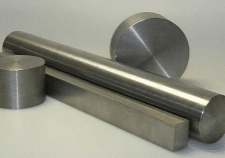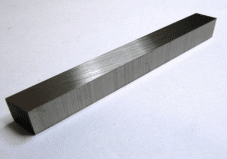D2 Tool Steel



The group D steels, which are high-carbon, high-chromium steels, are used in cold-work tools. These are the D2, D3, D4, D5, and D7 steels, which are referred to as group D steels. These steels have 12% chromium and 1.5–2.35% carbon. All other group D steels are air hardened and contain 1% mo, with the exception of type D3 steel. Although small portions can be gas quenched using a vacuum following austenitization, Type D3 steel is oil-quenched. Because of this, type D3 steel tools often become brittle during the hardening process. Among group D steels, type D2 steel is the one that is utilised the most frequently.
Chemical Composition
The following table shows the chemical composition of D2 tool steels.
| Element | Content (%) |
| C | 1.40 – 1.60 |
| Mn | 0.60 |
| Si | 0.60 |
| Co | 1.00 |
| Cr | 11.00 – 13.00 |
| Mo | 0.70 – 1.20 |
| V | 1.10 |
| P | 0.03 |
| Ni | 0.30 |
| Cu | 0.25 |
| S | 0.03 |
Physical Properties
The physical properties of D2 tool steels are outlined in the following table.
| Properties | Metric | Imperial |
| Density | 7.7 x 1000 kg/m3 | 0.278 lb/in3 |
| Melting point | 1421°C | 2590°F |
Mechanical Properties
The mechanical properties of D2 tool steels are tabulated below:
| Mechanical Properties | Metric | Imperial |
| Hardness, Knoop (converted from Rockwell C hardness) | 769 | 769 |
| Hardness, Rockwell C | 62 | 62 |
| Hardness, Vickers | 748 | 748 |
| Izod impact unnotched | 77.0 J | 56.8 ft-lb |
| Poisson's ratio | 0.27-0.30 | 0.27-0.30 |
| Elastic modulus | 190-210 GPa | 27557-30457 ksi |
